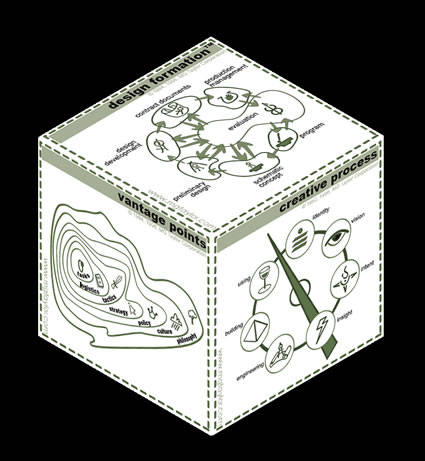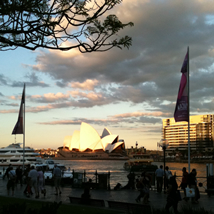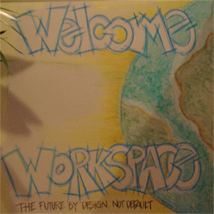note: this page is under construction |
DesignShop® Method Workshop |
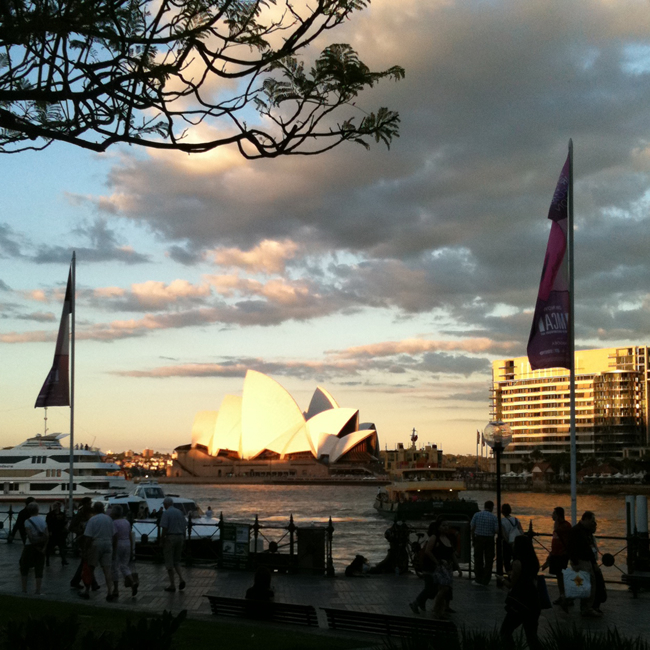 |
I choose this picture of the Sydney Opera House as the masthead for the documentations of my Talk and Workshop because of the iconic nature of the building and the struggles involved to bring it into being.
It is interesting that the excellent dialog which came up in the Workshop regarding the differences - which I do not accepts a being different - between theater art and the art of architecture served to highlight the very points I was seeking to make about the design process and the facilitation of it. It is reasonable to think of theater as ethereal and architecture as fixed and static yet I claim that great works in both - actually in all fields - are produced by the same process of continuous design-build-use governed by feedback though multiple iterations of work which in fact never ends. And, that this is always a group process the highest form of which is the practice of GroupGenius.
The Opera House started as a brilliant concept followed by a genuine collaboration between architect, engineers and builders only to be disrupted by political factors. Years later, the architect engaged again to be part of revisions to the structure. Like Shakespeare, recreated in every performance, the Opera House will continue to change and “learn” as Stewart Band describes it in How Buildings Learn during it’s time of authentic human stewardship. |
|
Outline Notes and links to Supplement the March 12, 2010 Experience |
| The Mission of MG Taylor is to support the Transition Manager who assumes the task and fiduciary duty to facilitate a community in “leaping the abyss” from one era, model, paradigm or circumstance to another state which is fundamentally a higher order of human aspiration and existence in balance and integration with all life forms and Planet Earth. |
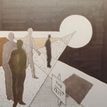 |
| Click on the icon to view the MG Taylor Mission Statement written in 1982. It has not changed to this day. This is a two generation effort. |
|
|
| Basic Forms of the Method: |
| This workshop focused primarily on the DesignShop® with some brief mention of navCenters™. The MG Taylor Method is a new way of working which involves the tight integration of the physical environment, work processes and technology. The DesignShop and the navCenter are two expressions, of several, of this way of working. |
icon and link coming |
| Click on the icon to view a description of the DesignShop process and the navCenter environment and system of project and knowledge management. |
|
|
| The MG Taylor System and Method is proprietary and protected by patents and other forms of Intellectual Property. The goal of securing this IP is not to make the work exclusive. It is to promote ubiquity of appropriate, ethical and profitable use for those who employ it, for humanity and for Gaia and her myriad life forms. |
icon and link coming |
| click on the icon to view Mg Taylor’s policy on IP, license and certification program and support of ValueWeb members use of the Method. |
|
|
| The SolutionBox Architecture provides an introduction to the Taylor Modeling Language. It combines three of these Models, The Creative Process, Vantage Points, and Design Formation to provide a mapping system of the path of an idea, movement, product, paradigm or social era travels from concept to full realization. Each cell in this 343 step matrix has it’s own language and standards of proof or demonstration and measure of veracity. This provides a navigation tool as well as a framework for right dialog and decision processes throughout the complete creation cycle. |
|
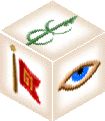
| For example, the voice of this web page is Vision, Strategy, Evaluation. You will see this SolutionBox icon throughout my web site so that you will know better how to evaluate and employ what I am saying. This is meta-data or critical information about information. |
|
click on the rh Model for more details |
|
|
|
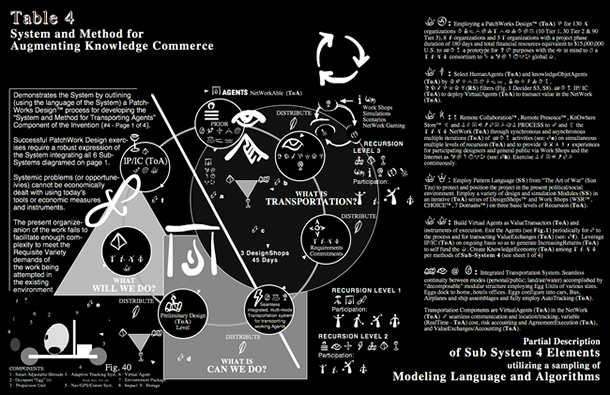 |
A further introduction to the Modeling Language is provided by my notes documenting a session with the World Economic Forum as we were preparing the design and use of the WEF WorkSpace for the upcoming 2007 Davos session.
|
| Click on the graphic to the left to go to this two part paper. It is a good introduction to the Language and has the benefit of having been written in response to a difficult and ultimately rewarding piece of work. While conceptual as well as “a builder,” I cannot explain the Taylor Method out of context of an actual use of it. The work is fact-based and experiential, not theoretical. It also evolves through use and can only be understood, as intended, in the context of use. |
|
some ASPECTS of the MG Taylor Method STRUCTURE: |
|
Environmrnt, Processes, Tooling |
| A true philosophy and practice of architecture encompasses the entire design, build, use, redesign cycle. Architecture has to based on, and fully support, a way of living as does the work environment while also facilitating a way of working, As technology and the design-knowledge work economy develops, the distinction between home and workplace fads away. |
|
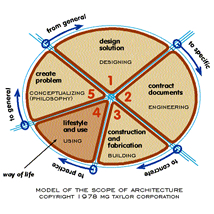 |
| A useful shorthand for looking into the Taylor Method - as it applies to learning and collaborative design sessions - provided the other four Domains are incorporated, is through the lens of an integrated environment, work process and tooling system. This is the core of the DesignShop process and the operation of navCenters. |
| The idea is not to make designShops and navCenters unique and special places, the idea is that this way becomes, over time, how work is done. Today, they are unique only because most environments of work are late 19th century processes in early 20th century buildings with 21st century technology amplifying all the negative effects of the former. These are not integrated systems. Nor are they healthy human environments which keep everyone connected to community and nature. The Taylor Method, as a formal system, and the environments we build seek to continually push the state-of-the-art of crafting effective workplaces. I believe this is the primary job of any professional: to create new ground and be an exemplar in practice. Everyone, however, is responsible to making their own personal environment for living and work. The professional can help but cannot replace individual ownership of habitat making. |
|
|
|
|
|
questions:
your workplace |
|
|
|
|
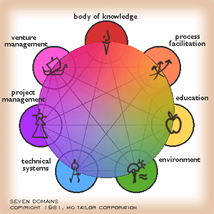 |
| Sometimes we are asked “where are the people in this Model?” The people are IN the environment created by the Model. In a DesignShop event, with new participant-users, the environment is provided. In a navCenter, after transfer of the Method, the users - and their ValueWeb - use and recreate and manage the environment. |
|
| The best way to understand the 7 Domains Model is to use it. The basic assumption of the Model is that humans do not require “management” as that term is typically understood. The 7 Domains which form the environment - in which people live and/or work - of an enterprise must be managed. This includes project and venture management. If this environment is properly designed and operated people are free to collaborate, create and prosper. How do we know this works? Because of the results from over 3,500 DesignShop® events conducted over the last 30 years and the use of the many navCenter™ environments we have built and operated. |
| Doing a 7 Domains audit is a good practice - done periodically - and always before doing an event or thinking about reconfiguring a workspace. The Take A Panel exercise, we did during the workshop, is one fast way of doing this. There are other Modules which provide more work iterations and thus more analysis. These can be done separately or in conjunction with the TAP exercise. The Mobius piece I handed out is a simple reminder of some of the things to think about while doing this. It also outlines the Taylor approach in deliberately generic terms so as to encourage self exploration and action. |
|
|
posted:
March 14, 2010 • updated: March 30, 2010 @ 7:12 AM |
|
|
|
GoTo:
A Future by Design Talk
|
GoTo:
A Future by Design Paper
|
|
|
| GoTo: Taliesin Return 2000 |
|
|
|
|
|
|




